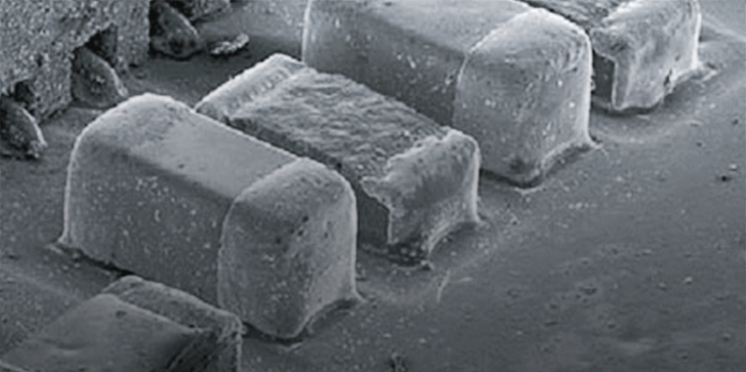phase-contrast transfer function, PCTF
phase-contrast transfer function
When an electron passes through a specimen, the electron wave undergoes a phase change due to the electrostatic potential (refractive index) of the specimen. The TEM image represents the positional change of the square of amplitudes (intensities) of the electron wave passing through the specimen, but the phase change of the electron wave cannot be observed (detected) in the TEM image. Thus, by converting the phase change into an amplitude change, the phase change can be observed in the TEM image.
The phase-contrast transfer function (PCTF) is a function to express what extent the amplitudes converted from the phase changes of the diffracted waves contribute (are transferred) to the TEM image. It should be noted that the PCTF is valid only for the image formation of a thin specimen in which the phase shifts of the diffracted waves are small (weak phase object approximation) and no multiple scattering occurs, i.e. for specimens with a thickness less than ~10 nm.
For a thin specimen (weak phase object) which slightly changes only the phase of the electron wave, if the phases of the diffracted waves are converted into the amplitudes by adjusting the defocus amount of the objective lens depending on the spherical aberration of the objective lens, the image of the thin specimen is produced.
The PCTF is expressed as a function of the spatial frequency q with the spherical aberration coefficient CS and the defocus amount df as parameters in the following equation [1].

Here, λ is the electron wavelength. The first term in the parentheses represents the phase changes of the diffracted waves due to defocus and is proportional to the square of the spatial frequency q. The second term is the phase changes of the diffracted waves due to spherical aberration and is proportional to the fourth power of the spatial frequency q. The sine function of the whole phase changes due to these terms is PCTF. PCTF represents the contribution of the phases of the diffracted waves to the amplitudes.
If the phase change approaches π/2 or -π/2, the value of PCTF approaches 1 or -1. Then, the phase change due to the specimen is effectively converted into an amplitude and a more correct specimen image is formed. An ideal image is obtained if PCTF is +1 or -1 over all spatial frequencies. However, since the spherical aberration term and the defocus term have different orders of q, such an ideal condition cannot be created. Thus, if an appropriate condition (Scherzer focus condition) is selected, where the phase change is as close to -π/2 as possible over a wide range of spatial frequencies as possible, the value of PCTF becomes close to -1 over the range. As a result, the phase object can be observed as a TEM image i.e. as the intensity (square of amplitude) of the transmitted wave through the specimen.
Figures show two examples of PCTF. The horizontal axis stands for spatial frequency and the vertical axis for the value of PCTF. Fig. (a) shows PCTF for the in-focus condition. Since the frequency range with the value of PCTF close to +1 is narrow, the correct image cannot be obtained. (When the value of PCTF is positive, the atomic sites are imaged bright.) Fig. (b) shows PCTF for the Scherzer focus condition. The value of PCTF is close to -1 over a wide frequency range. (When the value of PCTF is negative, the atomic sites are imaged dark.) The reciprocal of the frequency at which PCTF firstly crosses the horizontal axis (first zero) is defined as the resolution of the crystal structure image. At the frequencies higher than the first zero, the value of PCTF oscillates severely over the positive and negative values. Then, their contributions cancel out each other, that is, there is almost no contribution to the image formation unless post-data processing is performed.
To be more precise, the PCTF should be multiplied by an envelope function, which represents the effect of chromatic aberration and other effects which make the interference effect worse with increasing spatial frequency.

Fig. Examples of PCTF for an accelerating voltage of 200 kV and the coefficient CS = 0.5 mm.
(a) In-focus (df = 0 nm), (b) Scherzer focus (df = -41 nm).
In the case of the Scherzer focus, the frequency range of the phases (amplitudes) of the diffracted waves contributing to the image is wider and the spatial frequency of the first zero is higher than in the case of the in-focus. The frequency of the first zero is 5.1 nm-1, giving a spatial resolution of 0.20 nm.
Reference
[1] David B. Williams and C. Barry Carter, "Transmission Electron Microscopy: A Textbook for Materials Science", Springer.
Related Term(s)
Term(s) with "phase-contrast transfer function" in the description
Are you a medical professional or personnel engaged in medical care?
No
Please be reminded that these pages are not intended to provide the general public with information about the products.




